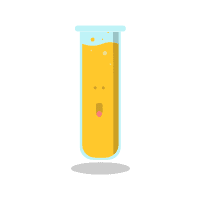
NCSCOS Grade 6 Earth Science - 6.E.2 - Diagnostic Earth Structure
Quiz by NCDPI
Grade 6
Science
North Carolina Standard Course of Study
Feel free to use or edit a copy
includes Teacher and Student dashboards
Measures 4 skills from
Measures 4 skills from
With a free account, teachers can
- edit the questions
- save a copy for later
- start a class game
- automatically assign follow-up activities based on students’ scores
- assign as homework
- share a link with colleagues
- print as a bubble sheet
10 questions
Show answers
- Q1How is the crust DIFFERENT from the other layers of the Earth?It is thinner.It is under pressure.It is mostly liquid.It is hotter.30s6.E.2.1
- Q2How are the crust and the inner core ALIKE?They are both solid.They both have the same temperature.They are both under the same pressure.They are both very close to the center of the Earth.30s6.E.2.1
- Q3Which most likely causes seafloor spreading?transform fault boundariesconvergent boundariesdivergent boundariesearthquakes30s6.E.2.2
- Q4Trenches in the ocean areon the continental shelf.close to the shore.part of the intertidal zone.the deepest part of the ocean.30s6.E.2.2
- Q5What events caused the formation of most islands in the South Pacific?meteorshurricanesvolcanoesearthquakes30s6.E.2.2
- Q6Which type of environment would contain nutrient-rich soil?an environment with a dry climate and few plantsan environment with a wet climate and many plantsan environment with a low population of producersan environment with a high population of consumers30s6.E.2.3
- Q7How are earthworms connected with soil fertility?They increase soil fertility by converting dead leaves into rich humus.They convert minerals in the soil to compounds that are harmful to plants.They increase soil fertility by fixing nitrogen compounds in the soil.They eat essential nutrients and reduce the fertility of the soil.30s6.E.2.3
- Q8The decayed organic material that gives soil its dark brown or black color is calledsilt.loam.clay.humus.30s6.E.2.3
- Q9What is not an example of being a good steward of the lithosphere?over grazingwater conservationproper waste disposalcrop rotation30s6.E.2.4
- Q10By disposing of solid waste properly, humans protect the Earth’s rich topsoil from contamination which is essential to agriculture and the sustainability of human life. What is the correct place to dispose of non-hazardous solid waste?landfilltreatment plantsewer systemreservoir30s6.E.2.4